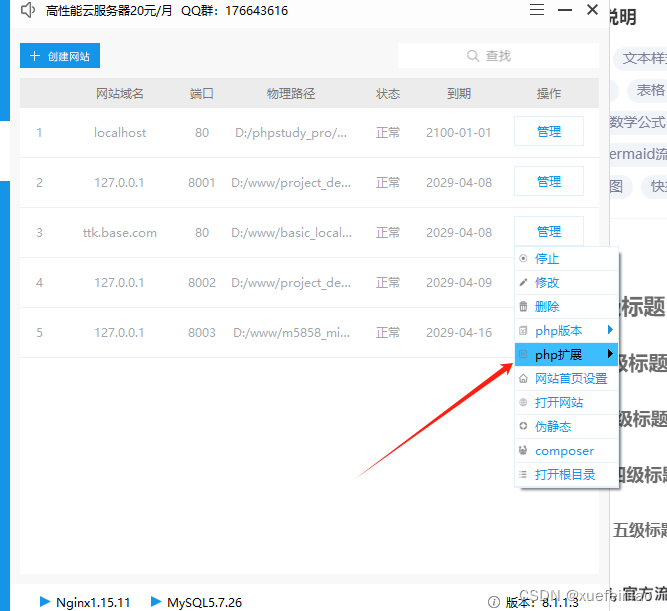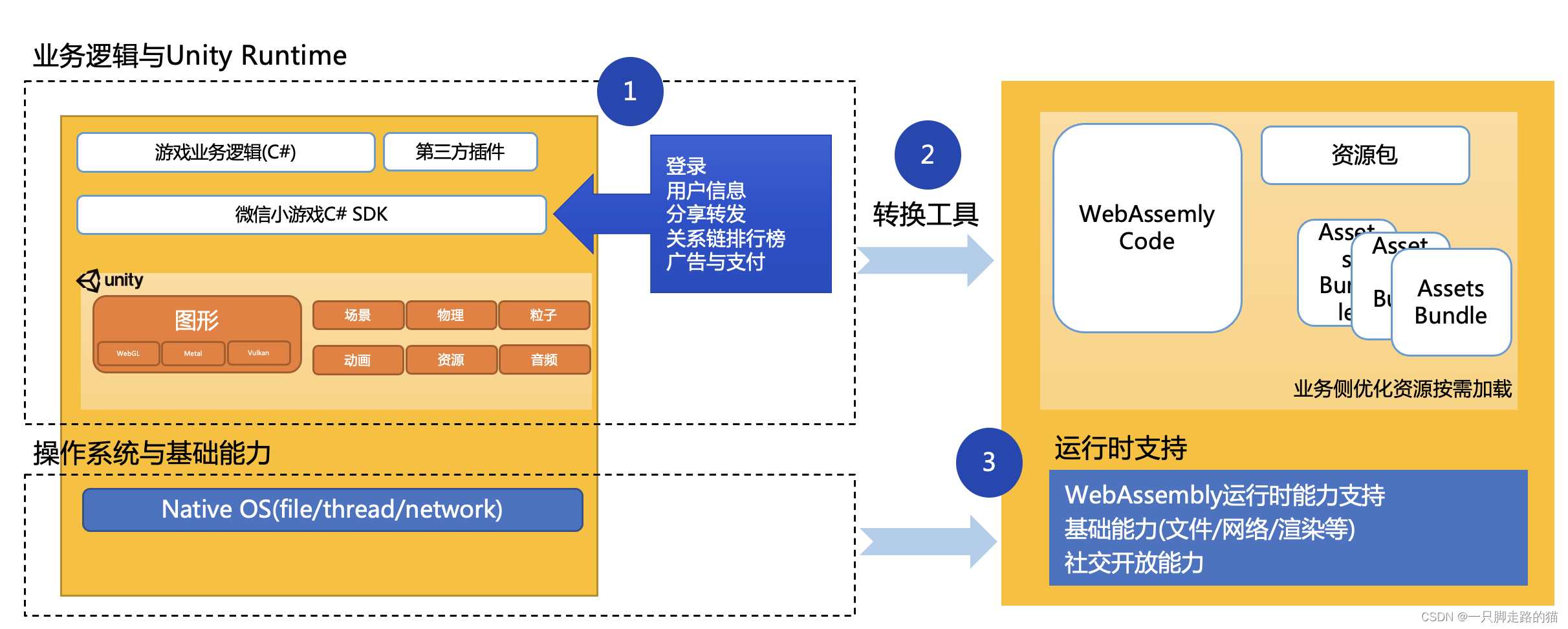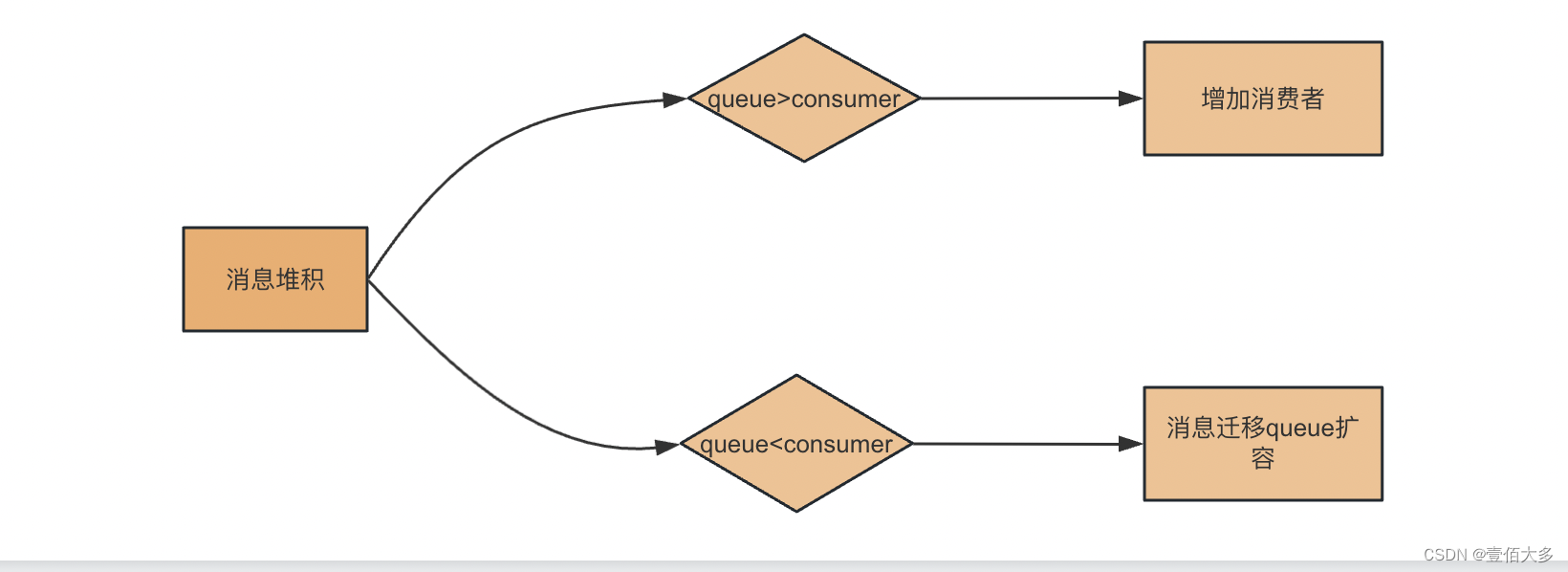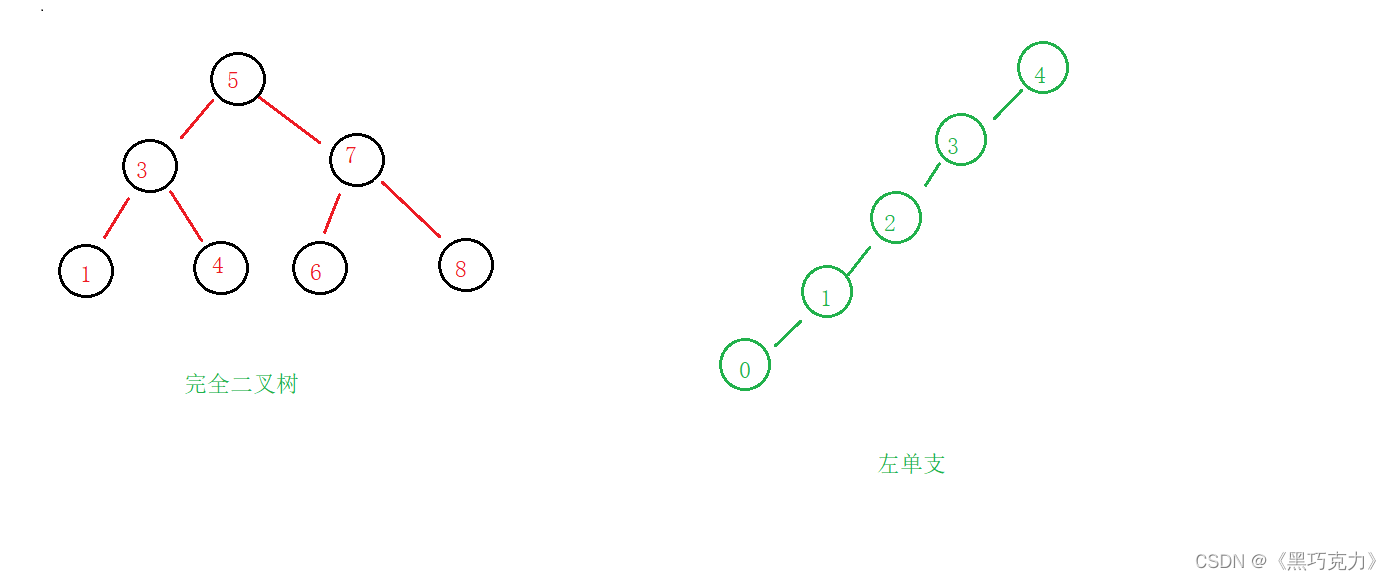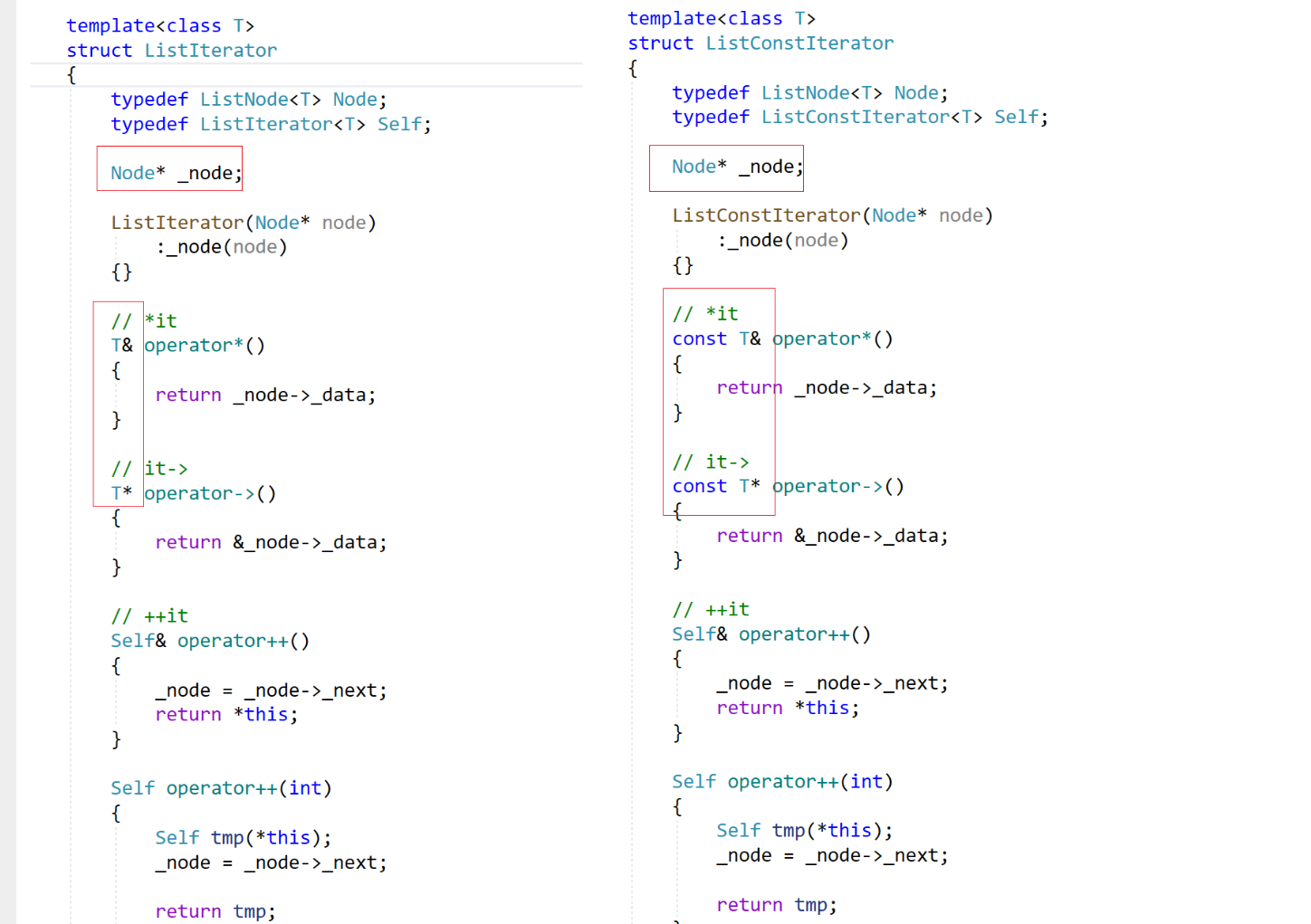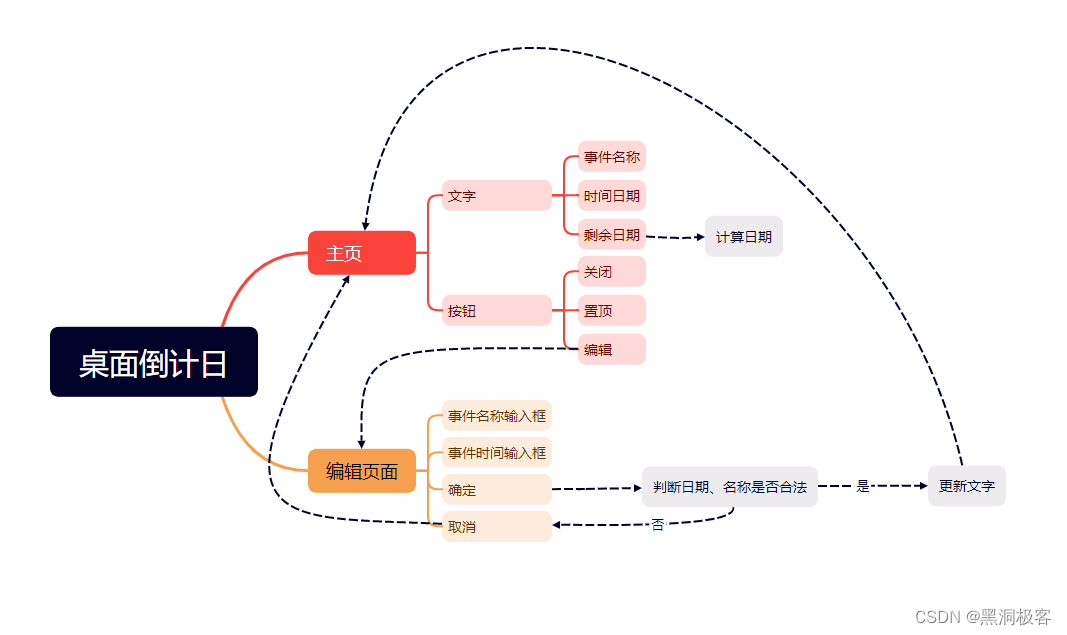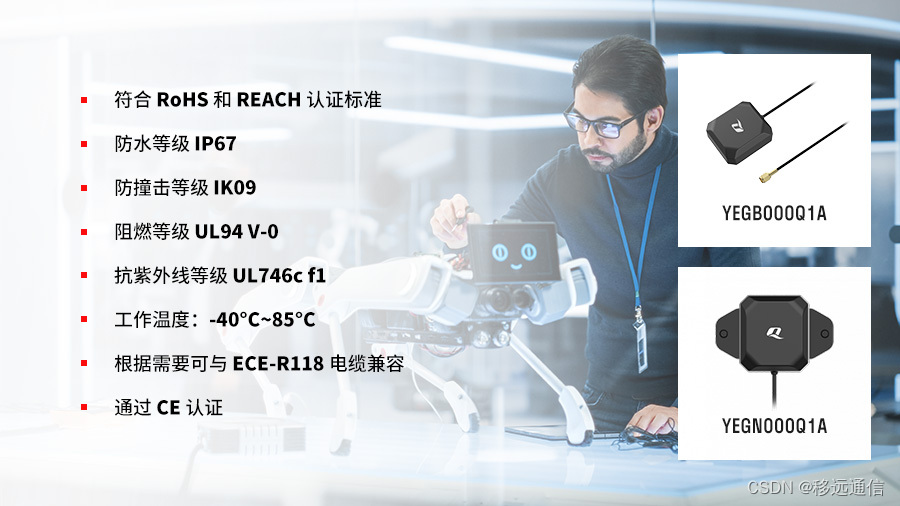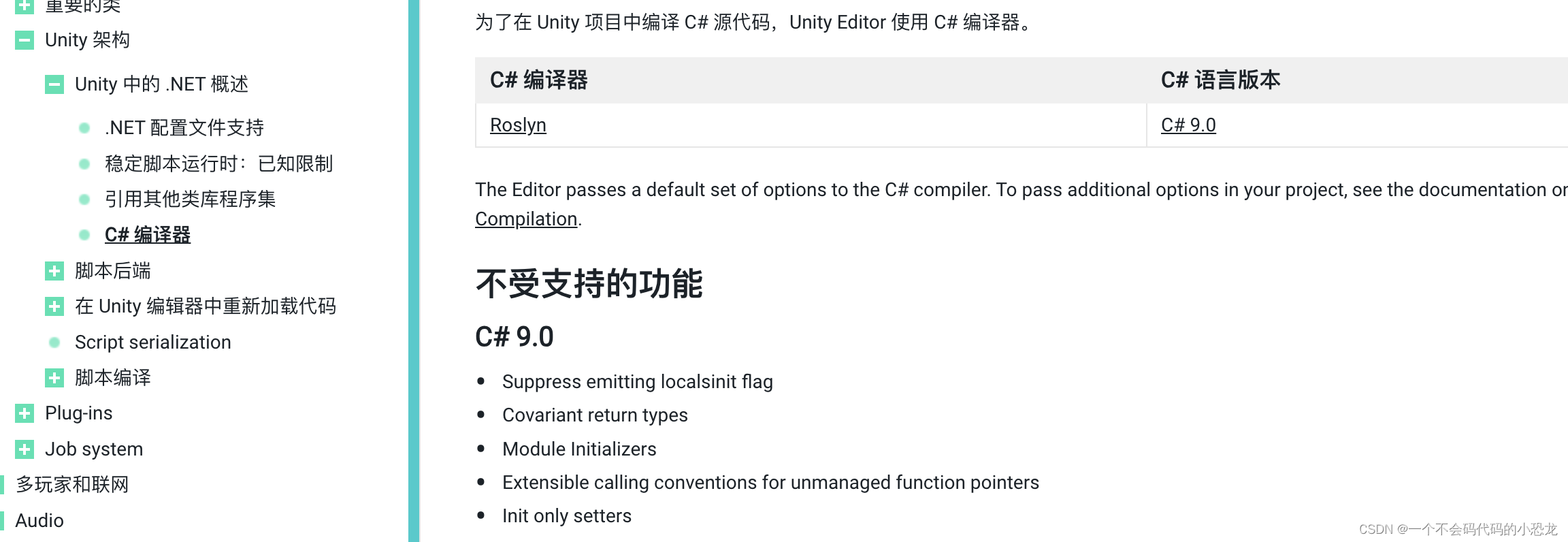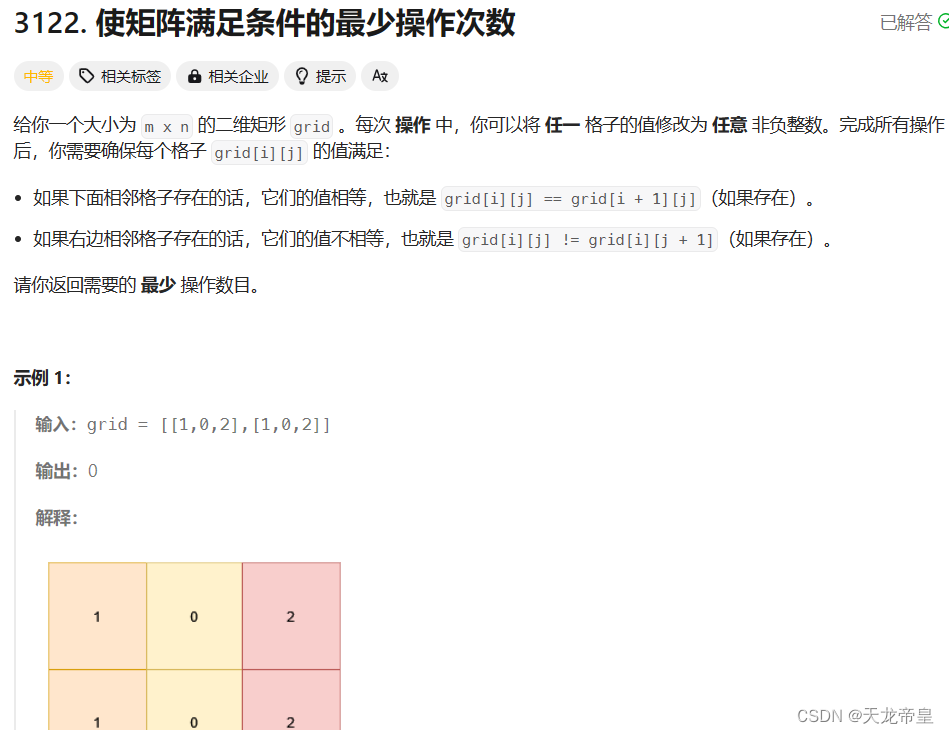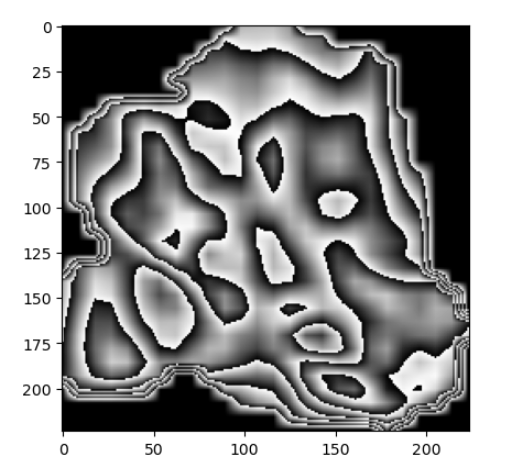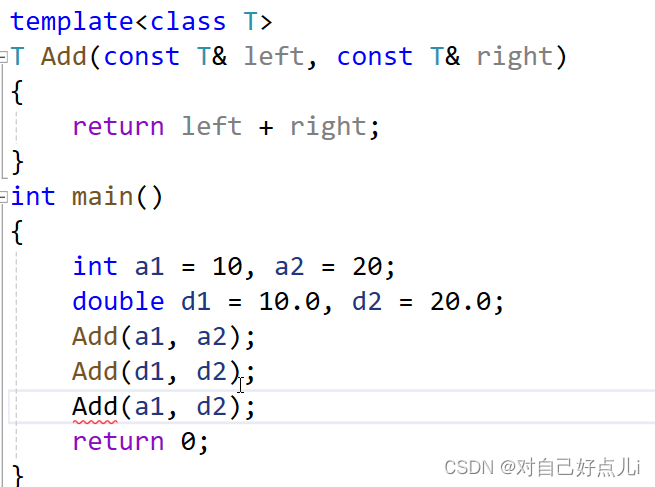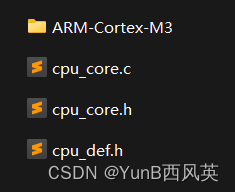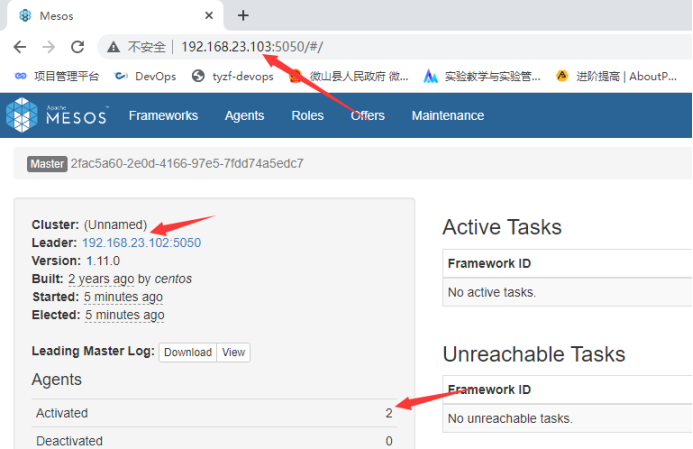一,i2c总线注册
1,i2c_bus_type
i2c_bus_type注册流程:
//kernel\drivers\i2c\i2c-core-base.c
postcore_initcall(i2c_init);
retval = bus_register(&i2c_bus_type);注册之后生成i2c bus目录:
/sys/bus/i2c # ls -l
drwxr-xr-x 2 root root 0 2023-12-18 18:16 devices
drwxr-xr-x 25 root root 0 2023-12-18 18:16 drivers
-rw-r--r-- 1 root root 4096 2023-12-18 18:16 drivers_autoprobe
--w------- 1 root root 4096 2023-12-18 18:16 drivers_probe
--w------- 1 root root 4096 2023-12-18 18:16 uevent具体的bus_register流程参考 “Linux设备模型(九) - bus/device/device_driver/class”。
2,调用bus match/probe 函数的时机
在注册设备的时候,设备会被添加到i2c bus的设备链表,然后遍历该总线上驱动链表上的驱动,调用i2c bus的match函数,如果设备与驱动匹配成功会调用bus的probe。
device:
device_add(struct device *dev)
----bus_add_device(dev); //把设备添加到bus
--------klist_add_tail(&dev->p->knode_bus, &bus->p->klist_devices);
----bus_probe_device(dev);
--------device_initial_probe(dev);
------------__device_attach(dev, true);
----------------ret = bus_for_each_drv(dev->bus, NULL, &data, __device_attach_driver);
--------------------__device_attach_driver
------------------------driver_match_device(drv, dev);
----------------------------drv->bus->match ? drv->bus->match(dev, drv) : 1;
------------------------driver_probe_device(drv, dev);
----------------------------really_probe(dev, drv);
--------------------------------//如果bus有probe函数优先执行bus的probe函数,如果没有则执行驱动的probe函数
--------------------------------if (dev->bus->probe) {
------------------------------------ret = dev->bus->probe(dev);
------------------------------------if (ret)
----------------------------------------goto probe_failed;
--------------------------------} else if (drv->probe) {
------------------------------------ret = drv->probe(dev);
------------------------------------if (ret)
----------------------------------------goto probe_failed;
--------------------------------}在注册驱动的时候,驱动会被添加到i2c bus的驱动链表,然后遍历该总线上设备链表上的所有设备,调用i2c bus的match函数,如果设备与驱动匹配成功,调用总线的probe函数。
driver:
driver_register(struct device_driver *drv)
----driver_find(drv->name, drv->bus);
bus_add_driver(drv);
----klist_add_tail(&priv->knode_bus, &bus->p->klist_drivers);
----if (drv->bus->p->drivers_autoprobe)
--------driver_attach(drv);
------------bus_for_each_dev(drv->bus, NULL, drv, __driver_attach);
----------------__driver_attach
--------------------driver_match_device(drv, dev);
------------------------drv->bus->match ? drv->bus->match(dev, drv) : 1;
--------------------device_driver_attach(drv, dev);
------------------------driver_probe_device(drv, dev);
----------------------------really_probe(dev, drv);3,i2c bus match函数的实现
static int i2c_device_match(struct device *dev, struct device_driver *drv)
{
struct i2c_client *client = i2c_verify_client(dev);
struct i2c_driver *driver;
/* Attempt an OF style match */
if (i2c_of_match_device(drv->of_match_table, client))
return 1;
/* Then ACPI style match */
if (acpi_driver_match_device(dev, drv))
return 1;
driver = to_i2c_driver(drv);
/* Finally an I2C match */
if (i2c_match_id(driver->id_table, client))
return 1;
return 0;
}i2c_device_match就是i2c_driver与i2c_device匹配的部分,在i2c_device_match函数中,可以看到,match函数并不只是提供一种匹配方式:
i2c_of_match_device,看到of我们就应该马上意识到这是设备树的匹配方式。
acpi_driver_match_device则是acpi的匹配方式,acpi的全称为the Advanced Configuration & Power Interface,高级设置与电源管理。
i2c_match_id(),通过注册i2c_driver时提供的id_table进行匹配,这是设备树机制产生之前的主要配对方式。
3.1 设备树匹配方式
Example:
#define TS_DRIVER_NAME "gtx8_i2c"
#ifdef CONFIG_OF
static const struct of_device_id i2c_matchs[] = { //这里的compatible会与dts中定义的i2c device的device_node中的compatible属性比较
{.compatible = "goodix,gt9897",}, //这里如果定义了type会与device_node中的device_type相比较
{.compatible = "goodix,gt9966",}, //这里如果定义了name会与device_node的name相比较
{.compatible = "goodix,gt9916",},
{},
};
MODULE_DEVICE_TABLE(of, i2c_matchs);
#endif
static const struct i2c_device_id i2c_id_table[] = {
{TS_DRIVER_NAME, 0},
{},
};
MODULE_DEVICE_TABLE(i2c, i2c_id_table);
static struct i2c_driver goodix_i2c_driver = {
.driver = {
.name = TS_DRIVER_NAME,
//.owner = THIS_MODULE,
.of_match_table = of_match_ptr(i2c_matchs),
},
.probe = goodix_i2c_probe,
.remove = goodix_i2c_remove,
.id_table = i2c_id_table,
};OF match关键代码实现:
i2c_of_match_device(drv->of_match_table, client)
----of_match_device(matches, &client->dev);
--------of_match_node(matches, dev->of_node);
------------match = __of_match_node(matches, node);
static
const struct of_device_id *__of_match_node(const struct of_device_id *matches,
const struct device_node *node)
{
const struct of_device_id *best_match = NULL;
int score, best_score = 0;
if (!matches)
return NULL;
for (; matches->name[0] || matches->type[0] || matches->compatible[0]; matches++) { //遍历of_device_id数组
score = __of_device_is_compatible(node, matches->compatible,
matches->type, matches->name);
if (score > best_score) {
best_match = matches;
best_score = score; //选择一个得分最高的结果,即最佳匹配
}
}
return best_match; //返回最佳匹配的device_id
}
/**
* __of_device_is_compatible() - Check if the node matches given constraints
* @device: pointer to node
* @compat: required compatible string, NULL or "" for any match
* @type: required device_type value, NULL or "" for any match
* @name: required node name, NULL or "" for any match
*
* Checks if the given @compat, @type and @name strings match the
* properties of the given @device. A constraints can be skipped by
* passing NULL or an empty string as the constraint.
*
* Returns 0 for no match, and a positive integer on match. The return
* value is a relative score with larger values indicating better
* matches. The score is weighted for the most specific compatible value
* to get the highest score. Matching type is next, followed by matching
* name. Practically speaking, this results in the following priority
* order for matches:
*
* 1. specific compatible && type && name
* 2. specific compatible && type
* 3. specific compatible && name
* 4. specific compatible
* 5. general compatible && type && name
* 6. general compatible && type
* 7. general compatible && name
* 8. general compatible
* 9. type && name
* 10. type
* 11. name
*/
static int __of_device_is_compatible(const struct device_node *device,
const char *compat, const char *type, const char *name)
{
struct property *prop;
const char *cp;
int index = 0, score = 0;
/* Compatible match has highest priority */
if (compat && compat[0]) {
prop = __of_find_property(device, "compatible", NULL); //获取compatible property
for (cp = of_prop_next_string(prop, NULL); cp;
cp = of_prop_next_string(prop, cp), index++) { //循环比较compatible中的string和matches->compatible
if (of_compat_cmp(cp, compat, strlen(compat)) == 0) {
score = INT_MAX/2 - (index << 2); //找到匹配的sting,index越大,匹配分值越低
break;
}
}
if (!score)
return 0;
}
/* Matching type is better than matching name */
if (type && type[0]) {
if (!__of_node_is_type(device, type)) //__of_get_property(np, "device_type", NULL);
return 0;
score += 2;
}
/* Matching name is a bit better than not */
if (name && name[0]) {
if (!of_node_name_eq(device, name)) //node_name = kbasename(np->full_name);
return 0;
score++;
}
return score;
}3.2 acpi匹配方式较为少用且较为复杂,这里暂且不做详细讨论
3.3 id_table匹配方式
const struct i2c_device_id *i2c_match_id(const struct i2c_device_id *id,
const struct i2c_client *client)
{
if (!(id && client))
return NULL;
while (id->name[0]) {
if (strcmp(client->name, id->name) == 0)
return id;
id++;
}
return NULL;
}
EXPORT_SYMBOL_GPL(i2c_match_id);4,i2c bus probe函数的实现
static int i2c_device_probe(struct device *dev)
{
struct i2c_client *client = i2c_verify_client(dev);
struct i2c_driver *driver;
int status;
... ...
driver = to_i2c_driver(dev->driver);
/*
* When there are no more users of probe(),
* rename probe_new to probe.
*/
if (driver->probe_new)
status = driver->probe_new(client);
else if (driver->probe)
status = driver->probe(client,
i2c_match_id(driver->id_table, client)); //i2c_driver的probe函数调用时机
else
status = -EINVAL;
... ...
}二,I2c适配器注册
1,i2c_add_adapter注册流程
module_init(i2c_dev_init); // kernel\drivers\i2c\busses\i2c-msm-geni.c
----i2c_dev_init(void)
--------platform_driver_register(&geni_i2c_driver);
------------geni_i2c_probe(struct platform_device *pdev)
----------------gi2c->adap.algo = &geni_i2c_algo;
----------------gi2c->adap.dev.parent = gi2c->dev; //controller -> adapter
----------------gi2c->adap.dev.of_node = pdev->dev.of_node;
----------------i2c_add_adapter(&gi2c->adap);
--------------------adapter->nr = id;
--------------------i2c_register_adapter(adapter);
----------------------------dev_set_name(&adap->dev, "i2c-%d", adap->nr);
----------------------------adap->dev.bus = &i2c_bus_type;
----------------------------adap->dev.type = &i2c_adapter_type; //i2c_adapter_type
----------------------------res = device_register(&adap->dev); //register adapter
----------------------------of_i2c_register_devices(adap); // kernel\drivers\i2c\i2c-core-of.c /* 对应下文 3.1.1 Declare the I2C devices via devicetree */
--------------------------------for_each_available_child_of_node(bus, node)
------------------------------------client = of_i2c_register_device(adap, node);
----------------------------------------client = i2c_new_client_device(adap, &info);
--------------------------------------------client->addr = info->addr;
--------------------------------------------client->dev.parent = &client->adapter->dev;
--------------------------------------------client->dev.bus = &i2c_bus_type;
--------------------------------------------client->dev.type = &i2c_client_type; //i2c_client_type
--------------------------------------------status = device_register(&client->dev); //register i2c client
----------------------------i2c_scan_static_board_info(adap); /* 对应下文 3.1.3 Declare the I2C devices in board files */
--------------------------------list_for_each_entry(devinfo, &__i2c_board_list, list)
------------------------------------i2c_new_client_device(adapter, &devinfo->board_info)
----------------------------------------client->addr = info->addr;
--------------------------------------------client->dev.parent = &client->adapter->dev;
--------------------------------------------client->dev.bus = &i2c_bus_type;
--------------------------------------------client->dev.type = &i2c_client_type;
--------------------------------------------status = device_register(&client->dev); //register i2c client
----------------------------bus_for_each_drv(&i2c_bus_type, NULL, adap, __process_new_adapter);
--------------------------------__process_new_adapter(struct device_driver *d, void *data)
------------------------------------i2c_do_add_adapter(struct i2c_driver *driver, struct i2c_adapter *adap)
----------------------------------------i2c_detect(adap, driver); // 对应下文 3.3 Method 3: Probe an I2C bus for certain devices
--------------------------------------------i2c_detect_address(temp_client, driver);
------------------------------------------------driver->detect(temp_client, &info);
------------------------------------------------i2c_new_client_device(adapter, &info);
----------------------------------------------------client->addr = info->addr;
----------------------------------------------------client->dev.parent = &client->adapter->dev;
----------------------------------------------------client->dev.bus = &i2c_bus_type;
----------------------------------------------------client->dev.type = &i2c_client_type;
----------------------------------------------------status = device_register(&client->dev); //register i2c client
------------------------------------------------list_add_tail(&client->detected, &driver->clients);在i2c adapter device注册之后,还有几种注册i2c slave device的方式:
-
扫描挂接在该adapter device node下的slave device
-
扫描在board files中定义的i2c slave device
-
通过在i2c driver中实现的探测函数和slave device的地址列表,探测到存在的slave device并注册
后续会详细介绍Linux内核中实例化i2c设备的几种方法。
2,qcom i2c controller for example (qcom i2c bus driver)
dts:
/* TUI over I2C */
qupv3_se0_i2c: i2c@980000 {
compatible = "qcom,i2c-geni";
reg = <0x980000 0x4000>;
#address-cells = <1>;
#size-cells = <0>;
interrupts = <GIC_SPI 601 IRQ_TYPE_LEVEL_HIGH>;
clock-names = "se-clk", "m-ahb", "s-ahb";
clocks = <&gcc GCC_QUPV3_WRAP0_S0_CLK>,
<&gcc GCC_QUPV3_WRAP_0_M_AHB_CLK>,
<&gcc GCC_QUPV3_WRAP_0_S_AHB_CLK>;
pinctrl-names = "default", "sleep";
pinctrl-0 = <&qupv3_se0_i2c_active>;
pinctrl-1 = <&qupv3_se0_i2c_sleep>;
dmas = <&gpi_dma0 0 0 3 64 2>,
<&gpi_dma0 1 0 3 64 2>;
dma-names = "tx", "rx";
qcom,wrapper-core = <&qupv3_0>;
status = "disabled";
};controller driver:
在platform driver框架下的实现
//kernel/drivers/i2c/busses/i2c-msm-geni.c
#define I2C_FUNC_SMBUS_EMUL (I2C_FUNC_SMBUS_QUICK | \
I2C_FUNC_SMBUS_BYTE | \
I2C_FUNC_SMBUS_BYTE_DATA | \
I2C_FUNC_SMBUS_WORD_DATA | \
I2C_FUNC_SMBUS_PROC_CALL | \
I2C_FUNC_SMBUS_WRITE_BLOCK_DATA | \
I2C_FUNC_SMBUS_I2C_BLOCK | \
I2C_FUNC_SMBUS_PEC)
static u32 geni_i2c_func(struct i2c_adapter *adap)
{
return I2C_FUNC_I2C | (I2C_FUNC_SMBUS_EMUL & ~I2C_FUNC_SMBUS_QUICK);
}
//传输函数的实现
static int geni_i2c_xfer(struct i2c_adapter *adap,
struct i2c_msg msgs[],
int num)
{
}
static const struct i2c_algorithm geni_i2c_algo = {
.master_xfer = geni_i2c_xfer,
.functionality = geni_i2c_func,
};
static int geni_i2c_probe(struct platform_device *pdev)
{
struct geni_i2c_dev *gi2c;
struct resource *res;
gi2c->dev = &pdev->dev;
res = platform_get_resource(pdev, IORESOURCE_MEM, 0);
if (!res)
return -EINVAL;
gi2c->base = devm_ioremap_resource(gi2c->dev, res);
if (IS_ERR(gi2c->base))
return PTR_ERR(gi2c->base);
if (!gi2c->is_le_vm) {
gi2c->irq = platform_get_irq(pdev, 0);
if (gi2c->irq < 0)
return gi2c->irq;
irq_set_status_flags(gi2c->irq, IRQ_NOAUTOEN);
ret = devm_request_irq(gi2c->dev, gi2c->irq, geni_i2c_irq,
0, "i2c_geni", gi2c);
if (ret) {
dev_err(gi2c->dev, "Request_irq failed:%d: err:%d\n",
gi2c->irq, ret);
return ret;
}
}
gi2c->adap.algo = &geni_i2c_algo;
init_completion(&gi2c->xfer);
platform_set_drvdata(pdev, gi2c);
i2c_set_adapdata(&gi2c->adap, gi2c);
gi2c->adap.dev.parent = gi2c->dev;
gi2c->adap.dev.of_node = pdev->dev.of_node;
strlcpy(gi2c->adap.name, "Geni-I2C", sizeof(gi2c->adap.name));
ret = i2c_add_adapter(&gi2c->adap);
if (ret) {
dev_err(gi2c->dev, "Add adapter failed, ret=%d\n", ret);
return ret;
}
... ...
}
static const struct of_device_id geni_i2c_dt_match[] = {
{ .compatible = "qcom,i2c-geni" },
{}
};
MODULE_DEVICE_TABLE(of, geni_i2c_dt_match);
static struct platform_driver geni_i2c_driver = {
.probe = geni_i2c_probe,
.remove = geni_i2c_remove,
.driver = {
.name = "i2c_geni",
.pm = &geni_i2c_pm_ops,
.of_match_table = geni_i2c_dt_match,
},
};
static int __init i2c_dev_init(void)
{
return platform_driver_register(&geni_i2c_driver);
}
module_init(i2c_dev_init);不同vendor IC的i2c controller driver框架实现大同小异,只是传输函数的实现上不同,需要读写的寄存器地址也不一样。
3,传输函数的实现 geni_i2c_xfer
三,I2C从设备注册
1,I2C从设备注册API - i2c_new_client_device
struct i2c_board_info - 描述的是具体的I2C从设备
/**
* struct i2c_board_info - template for device creation
* @type: chip type, to initialize i2c_client.name
* @flags: to initialize i2c_client.flags
* @addr: stored in i2c_client.addr
* @dev_name: Overrides the default <busnr>-<addr> dev_name if set
* @platform_data: stored in i2c_client.dev.platform_data
* @of_node: pointer to OpenFirmware device node
* @fwnode: device node supplied by the platform firmware
* @properties: additional device properties for the device
* @resources: resources associated with the device
* @num_resources: number of resources in the @resources array
* @irq: stored in i2c_client.irq
*
* I2C doesn't actually support hardware probing, although controllers and
* devices may be able to use I2C_SMBUS_QUICK to tell whether or not there's
* a device at a given address. Drivers commonly need more information than
* that, such as chip type, configuration, associated IRQ, and so on.
*
* i2c_board_info is used to build tables of information listing I2C devices
* that are present. This information is used to grow the driver model tree.
* For mainboards this is done statically using i2c_register_board_info();
* bus numbers identify adapters that aren't yet available. For add-on boards,
* i2c_new_client_device() does this dynamically with the adapter already known.
*/
struct i2c_board_info {
char type[I2C_NAME_SIZE];
unsigned short flags;
unsigned short addr;
const char *dev_name;
void *platform_data;
struct device_node *of_node;
struct fwnode_handle *fwnode;
const struct property_entry *properties;
const struct resource *resources;
unsigned int num_resources;
int irq;
};struct i2c_devinfo - struct i2c_devinfo 和 struct i2c_board_info 类似,同样用于描述具体的 I2C 从设备
struct i2c_devinfo {
struct list_head list;
int busnum;
struct i2c_board_info board_info;
};i2c_new_client_device函数的实现
struct bus_type i2c_bus_type = {
.name = "i2c",
.match = i2c_device_match,
.probe = i2c_device_probe,
.remove = i2c_device_remove,
.shutdown = i2c_device_shutdown,
};
EXPORT_SYMBOL_GPL(i2c_bus_type);
struct device_type i2c_client_type= {
.groups = i2c_dev_groups,
.uevent = i2c_device_uevent,
.release = i2c_client_dev_release,
};
EXPORT_SYMBOL_GPL(i2c_client_type);
static void i2c_dev_set_name(struct i2c_adapter *adap,
struct i2c_client *client,
struct i2c_board_info const *info)
{
struct acpi_device *adev = ACPI_COMPANION(&client->dev);
if (info && info->dev_name) {
dev_set_name(&client->dev, "i2c-%s", info->dev_name);
return;
}
if (adev) {
dev_set_name(&client->dev, "i2c-%s", acpi_dev_name(adev));
return;
}
dev_set_name(&client->dev, "%d-%04x", i2c_adapter_id(adap),
i2c_encode_flags_to_addr(client)); //client device example:/sys/devices/platform/soc/a94000.i2c/i2c-1/1-0052
}
/**
* device_add_properties - Add a collection of properties to a device object.
* @dev: Device to add properties to.
* @properties: Collection of properties to add.
*
* Associate a collection of device properties represented by @properties with
* @dev. The function takes a copy of @properties.
*
* WARNING: The callers should not use this function if it is known that there
* is no real firmware node associated with @dev! In that case the callers
* should create a software node and assign it to @dev directly.
*/
int device_add_properties(struct device *dev,
const struct property_entry *properties)
{
struct fwnode_handle *fwnode;
fwnode = fwnode_create_software_node(properties, NULL);
if (IS_ERR(fwnode))
return PTR_ERR(fwnode);
set_secondary_fwnode(dev, fwnode);
return 0;
}
EXPORT_SYMBOL_GPL(device_add_properties);
/**
* i2c_new_client_device - instantiate an i2c device
* @adap: the adapter managing the device
* @info: describes one I2C device; bus_num is ignored
* Context: can sleep
*
* Create an i2c device. Binding is handled through driver model
* probe()/remove() methods. A driver may be bound to this device when we
* return from this function, or any later moment (e.g. maybe hotplugging will
* load the driver module). This call is not appropriate for use by mainboard
* initialization logic, which usually runs during an arch_initcall() long
* before any i2c_adapter could exist.
*
* This returns the new i2c client, which may be saved for later use with
* i2c_unregister_device(); or an ERR_PTR to describe the error.
*/
struct i2c_client *
i2c_new_client_device(struct i2c_adapter *adap, struct i2c_board_info const *info)
{
struct i2c_client *client;
int status;
... ...
client->dev.parent = &client->adapter->dev; //parent
client->dev.bus = &i2c_bus_type; //bus_type
client->dev.type = &i2c_client_type; //device_type
client->dev.of_node = of_node_get(info->of_node);
client->dev.fwnode = info->fwnode;
i2c_dev_set_name(adap, client, info);
if (info->properties) {
//把board info中定义的properties拷贝到device的fwnode中 (dev->fwnode->secondary = fwnode; 或者 dev->fwnode = fwnode;)
status = device_add_properties(&client->dev, info->properties);
if (status) {
dev_err(&adap->dev,
"Failed to add properties to client %s: %d\n",
client->name, status);
goto out_err_put_of_node;
}
}
status = device_register(&client->dev);
if (status)
goto out_free_props;
... ...
}2,struct fwnode_handle 与 struct device_node的区别
struct fwnode_handle结构体的定义:
struct fwnode_handle {
struct fwnode_handle *secondary;
const struct fwnode_operations *ops;
struct device *dev;
struct list_head suppliers;
struct list_head consumers;
u8 flags;
ANDROID_KABI_RESERVE(1);
};struct device_node结构体的定义:
struct device_node {
const char *name;
phandle phandle;
const char *full_name;
struct fwnode_handle fwnode;
struct property *properties;
struct property *deadprops; /* removed properties */
struct device_node *parent;
struct device_node *child;
struct device_node *sibling;
#if defined(CONFIG_OF_KOBJ)
struct kobject kobj;
#endif
unsigned long _flags;
void *data;
#if defined(CONFIG_SPARC)
unsigned int unique_id;
struct of_irq_controller *irq_trans;
#endif
};使用fwnode API读取u32类型的property的一个API - fwnode_property_read_u32的实现:
fwnode_property_read_u32(const struct fwnode_handle *fwnode, const char *propname, u32 *val)
----fwnode_property_read_u32_array(fwnode, propname, val, 1);
--------fwnode_property_read_int_array(fwnode, propname, sizeof(u32), val, nval);
------------fwnode_call_int_op(fwnode, property_read_int_array, propname, elem_size, val, nval);
------------fwnode_call_int_op(fwnode->secondary, property_read_int_array, propname, elem_size, val, nval);
----------------of_fwnode_property_read_int_array
//kernel\msm_kernel\drivers\of\property.c
const struct fwnode_operations of_fwnode_ops = {
.get = of_fwnode_get,
.put = of_fwnode_put,
.device_is_available = of_fwnode_device_is_available,
.device_get_match_data = of_fwnode_device_get_match_data,
.property_present = of_fwnode_property_present,
.property_read_int_array = of_fwnode_property_read_int_array,
.property_read_string_array = of_fwnode_property_read_string_array,
.get_name = of_fwnode_get_name,
.get_name_prefix = of_fwnode_get_name_prefix,
.get_parent = of_fwnode_get_parent,
.get_next_child_node = of_fwnode_get_next_child_node,
.get_named_child_node = of_fwnode_get_named_child_node,
.get_reference_args = of_fwnode_get_reference_args,
.graph_get_next_endpoint = of_fwnode_graph_get_next_endpoint,
.graph_get_remote_endpoint = of_fwnode_graph_get_remote_endpoint,
.graph_get_port_parent = of_fwnode_graph_get_port_parent,
.graph_parse_endpoint = of_fwnode_graph_parse_endpoint,
.add_links = of_fwnode_add_links,
};
EXPORT_SYMBOL_GPL(of_fwnode_ops);
static int of_fwnode_property_read_int_array(const struct fwnode_handle *fwnode,
const char *propname,
unsigned int elem_size, void *val,
size_t nval)
{
const struct device_node *node = to_of_node(fwnode);
if (!val)
return of_property_count_elems_of_size(node, propname,
elem_size);
switch (elem_size) {
case sizeof(u8):
return of_property_read_u8_array(node, propname, val, nval);
case sizeof(u16):
return of_property_read_u16_array(node, propname, val, nval);
case sizeof(u32):
return of_property_read_u32_array(node, propname, val, nval);
case sizeof(u64):
return of_property_read_u64_array(node, propname, val, nval);
}
return -ENXIO;
}fwnode_handle 与 device_node的互相转换:
static inline struct fwnode_handle *of_node_to_fwnode(struct device_node *node)
{
return node ? &node->fwnode : NULL;
}
#define to_of_node(__fwnode) \
({ \
typeof(__fwnode) __to_of_node_fwnode = (__fwnode); \
\
is_of_node(__to_of_node_fwnode) ? \
container_of(__to_of_node_fwnode, \
struct device_node, fwnode) : \
NULL; \
})fwnode就是of_node,所有的fwnode_函数都是二次封装的of_函数。
所以在驱动中,有的人喜欢有fwnode对设备树进行解析,有的人喜欢用of,功能都是一样的,没必要纠结。
3,Linux内核中实例化i2c设备的几种方法
对于i2c节点,显然,它会转换成一个platform_device,内核中应该会有一个与它匹配的platform_driver,配对成功之后调用这个platform_driver的probe函数。
但是,对于i2c节点的子节点,它并不会转换成一个platform_device,而是交给i2c节点转换成的platform_device对应的platform_driver的probe函数来处理。
这是因为,i2c节点的子节点可能转换成其他结构体更合适,而不是platform_device结构体。
事实上,i2c节点的子节点会被probe函数处理,转换成一个 i2c_client,之后根据这个 i2c_client 找到对应的驱动程序。
参考内核文档的描述 Documentation/i2c/instantiating-devices,分析Linux内核中实例化i2c设备的几种方法。
3.1 Method 1: Declare the I2C devices statically
This method is appropriate when the I2C bus is a system bus as is the case
for many embedded systems. On such systems, each I2C bus has a number which
is known in advance. It is thus possible to pre-declare the I2C devices
which live on this bus.
This information is provided to the kernel in a different way on different
architectures: device tree, ACPI or board files.
When the I2C bus in question is registered, the I2C devices will be
instantiated automatically by i2c-core. The devices will be automatically
unbound and destroyed when the I2C bus they sit on goes away (if ever).
3.1.1 Declare the I2C devices via devicetree
On platforms using devicetree, the declaration of I2C devices is done in
subnodes of the master controller.
Example::
dts : kernel/arch/arm/boot/dts/imx6dl-riotboard.dts
&i2c1 {
clock-frequency = <100000>;
pinctrl-names = "default";
pinctrl-0 = <&pinctrl_i2c1>;
status = "okay";
codec: sgtl5000@a {
compatible = "fsl,sgtl5000";
reg = <0x0a>;
clocks = <&clks IMX6QDL_CLK_CKO>;
VDDA-supply = <®_2p5v>;
VDDIO-supply = <®_3p3v>;
};
pmic: pf0100@8 {
compatible = "fsl,pfuze100";
reg = <0x08>;
interrupt-parent = <&gpio5>;
interrupts = <16 8>;
fsl,pmic-stby-poweroff;
regulators {
reg_vddcore: sw1ab { /* VDDARM_IN */
regulator-min-microvolt = <300000>;
regulator-max-microvolt = <1875000>;
regulator-always-on;
};
};
};
};I2C framework core会在每一个I2C adapter注册时,为它下面所有的slave device创建struct i2c_client结构,并匹配对应的struct i2c_driver变量,调用driver的probe接口。
dts里配置的i2c slave device实例化成i2c_client的流程:
i2c_register_adapter(adapter);
--------dev_set_name(&adap->dev, "i2c-%d", adap->nr);
--------adap->dev.bus = &i2c_bus_type;
--------adap->dev.type = &i2c_adapter_type;
--------res = device_register(&adap->dev); //register adapter
--------of_i2c_register_devices(adap); // kernel\msm_kernel\drivers\i2c\i2c-core-of.c
------------for_each_available_child_of_node(bus, node)
----------------client = of_i2c_register_device(adap, node);
--------------------of_i2c_get_board_info(&adap->dev, node, &info);
------------------------info->addr = addr;
------------------------info->of_node = node;
------------------------info->fwnode = of_fwnode_handle(node);
--------------------client = i2c_new_client_device(adap, &info);
------------------------client->addr = info->addr;
------------------------client->init_irq = i2c_dev_irq_from_resources(info->resources, info->num_resources);
------------------------client->dev.parent = &client->adapter->dev;
------------------------client->dev.bus = &i2c_bus_type;
------------------------client->dev.type = &i2c_client_type;
------------------------client->dev.of_node = of_node_get(info->of_node);
------------------------client->dev.fwnode = info->fwnode;
------------------------status = device_register(&client->dev); //register i2c client3.1.2 Declare the I2C devices via ACPI
3.1.3 Declare the I2C devices in board files
In many embedded architectures, devicetree has replaced the old hardware
description based on board files, but the latter are still used in old
code. Instantiating I2C devices via board files is done with an array of
struct i2c_board_info which is registered by calling
i2c_register_board_info().
(1) Example
D:\kernel\msm_kernel\arch\arm\mach-pxa\stargate2.c
static struct i2c_board_info __initdata stargate2_i2c_board_info[] = {
/* Techically this a pca9500 - but it's compatible with the 8574
* for gpio expansion and the 24c02 for eeprom access.
*/
{
.type = "pcf8574",
.addr = 0x27,
.platform_data = &platform_data_pcf857x,
}, {
.type = "24c02",
.addr = 0x57,
.properties = pca9500_eeprom_properties,
}, {
.type = "max1238",
.addr = 0x35,
}, { /* ITS400 Sensor board only */
.type = "max1363",
.addr = 0x34,
/* Through a nand gate - Also beware, on V2 sensor board the
* pull up resistors are missing.
*/
.irq = PXA_GPIO_TO_IRQ(99),
}, { /* ITS400 Sensor board only */
.type = "tsl2561",
.addr = 0x49,
/* Through a nand gate - Also beware, on V2 sensor board the
* pull up resistors are missing.
*/
.irq = PXA_GPIO_TO_IRQ(99),
}, { /* ITS400 Sensor board only */
.type = "tmp175",
.addr = 0x4A,
.irq = PXA_GPIO_TO_IRQ(96),
},
};
static void __init stargate2_init(void)
{
... ...
i2c_register_board_info(0, ARRAY_AND_SIZE(stargate2_i2c_board_info));
... ...
}The above code declares 6 devices on I2C bus 0, including their respective
addresses and custom data needed by their drivers.
(2) custom data - struct property_entry
static const struct property_entry pca9500_eeprom_properties[] = {
PROPERTY_ENTRY_U32("pagesize", 4),
{ }
};
//定义i2c_board_info中的property的一些宏
#define PROPERTY_ENTRY_U8(_name_, _val_) \
__PROPERTY_ENTRY_ELEMENT(_name_, u8_data, U8, _val_)
#define PROPERTY_ENTRY_U16(_name_, _val_) \
__PROPERTY_ENTRY_ELEMENT(_name_, u16_data, U16, _val_)
#define PROPERTY_ENTRY_U32(_name_, _val_) \
__PROPERTY_ENTRY_ELEMENT(_name_, u32_data, U32, _val_)
#define PROPERTY_ENTRY_U64(_name_, _val_) \
__PROPERTY_ENTRY_ELEMENT(_name_, u64_data, U64, _val_)
#define PROPERTY_ENTRY_STRING(_name_, _val_) \
__PROPERTY_ENTRY_ELEMENT(_name_, str, STRING, _val_)
#define PROPERTY_ENTRY_BOOL(_name_) \
(struct property_entry) { \
.name = _name_, \
.is_inline = true, \
}(3) 注册i2c board info
i2c_register_board_info - statically declare I2C devices,source code path kernel\msm_kernel\drivers\i2c\i2c-boardinfo.c
This should be done in board-specific init code
near arch_initcall() time, or equivalent, before any I2C adapter driver is registered.
The I2C devices will be created later, after the adapter for the relevant bus has been registered. After that moment, standard driver model tools are used to bind "new style" I2C drivers to the devices.
extern struct list_head __i2c_board_list;
i2c_register_board_info(int busnum, struct i2c_board_info const *info, unsigned len)
----struct i2c_devinfo *devinfo;
----devinfo->board_info = *info;
----if (info->properties)
--------devinfo->board_info.properties = property_entries_dup(info->properties);
------------property_entry_copy_data(&p[i], &properties[i]);
----list_add_tail(&devinfo->list, &__i2c_board_list);(4) 根据i2c board info创建i2c client device
i2c_register_adapter(struct i2c_adapter *adap)
----res = device_register(&adap->dev); //register adapter
----i2c_scan_static_board_info(adap);
--------list_for_each_entry(devinfo, &__i2c_board_list, list)
------------i2c_new_client_device(adapter, &devinfo->board_info)
----------------client->addr = info->addr;
----------------client->dev.parent = &client->adapter->dev;
----------------client->dev.bus = &i2c_bus_type;
----------------client->dev.type = &i2c_client_type;
----------------status = device_register(&client->dev); //register i2c client3.2 Method 2: Instantiate the devices explicitly
3.2.1 i2c_new_client_device
This method is appropriate when a larger device uses an I2C bus for
internal communication. A typical case is TV adapters.
You won't know the number of the I2C
bus in advance, so the method 1 described above can't be used. Instead,
you can instantiate your I2C devices explicitly. This is done by filling
a struct i2c_board_info and calling i2c_new_client_device().
Example:
kernel\drivers\net\ethernet\sfc\falcon\falcon_boards.c
static const struct i2c_board_info sfe4001_hwmon_info = {
I2C_BOARD_INFO("max6647", 0x4e),
};
static int sfe4001_init(struct ef4_nic *efx)
{
struct falcon_board *board = falcon_board(efx);
int rc;
... ...
board->hwmon_client =
i2c_new_client_device(&board->i2c_adap, &sfe4001_hwmon_info);
... ...
}3.2.2 i2c_new_scanned_device
A variant of this is when you don't know for sure if an I2C device is
present or not (for example for an optional feature which is not present
on cheap variants of a board but you have no way to tell them apart), or
it may have different addresses from one board to the next (manufacturer
changing its design without notice). In this case, you can call
i2c_new_scanned_device() instead of i2c_new_client_device().
Example:
kernel\drivers\i2c\busses\i2c-icy.c
static unsigned short const icy_ltc2990_addresses[] = {
0x4c, 0x4d, 0x4e, 0x4f, I2C_CLIENT_END
};
static int icy_probe(struct zorro_dev *z,
const struct zorro_device_id *ent)
{
struct icy_i2c *i2c;
struct i2c_board_info ltc2990_info = {
.type = "ltc2990",
};
if (i2c_pcf_add_bus(&i2c->adapter)) {
dev_err(&z->dev, "i2c_pcf_add_bus() failed\n");
return -ENXIO;
}
... ...
i2c->ltc2990_client =
i2c_new_scanned_device(&i2c->adapter,
<c2990_info,
icy_ltc2990_addresses,
NULL);
... ...
}It first tries at address 0x4c, if nothing
is found there it tries address 0x4d, and if still nothing is found, it
simply gives up.
static void icy_remove(struct zorro_dev *z)
{
struct icy_i2c *i2c = dev_get_drvdata(&z->dev);
i2c_unregister_device(i2c->ltc2990_client);
fwnode_remove_software_node(i2c->ltc2990_fwnode);
i2c_del_adapter(&i2c->adapter);
}The driver which instantiated the I2C device is responsible for destroying
it on cleanup. This is done by calling i2c_unregister_device() on the
pointer that was earlier returned by i2c_new_client_device() or
i2c_new_scanned_device().
3.3 Method 3: Probe an I2C bus for certain devices
In that case, I2C devices are neither declared nor instantiated
explicitly. Instead, i2c-core will probe for such devices as soon as their
drivers are loaded, and if any is found, an I2C device will be
instantiated automatically. In order to prevent any misbehavior of this
mechanism, the following restrictions apply:
-
The I2C device driver must implement the detect() method, which
identifies a supported device by reading from arbitrary registers.
-
Only buses which are likely to have a supported device and agree to be
probed, will be probed. For example this avoids probing for hardware
monitoring chips on a TV adapter.
(1) Example
kernel\msm_kernel\drivers\leds
/* Return 0 if detection is successful, -ENODEV otherwise */
static int blinkm_detect(struct i2c_client *client, struct i2c_board_info *info)
{
if (!i2c_check_functionality(adapter, I2C_FUNC_SMBUS_BYTE_DATA
| I2C_FUNC_SMBUS_WORD_DATA
| I2C_FUNC_SMBUS_WRITE_BYTE))
return -ENODEV;
... ....
/* Step 1: Read BlinkM address back - cmd_char 'a' */
ret = blinkm_write(client, BLM_GET_ADDR, NULL);
if (ret < 0)
return ret;
usleep_range(20000, 30000); /* allow a small delay */
ret = blinkm_read(client, BLM_GET_ADDR, tmpargs);
if (ret < 0)
return ret;
if (tmpargs[0] != 0x09) {
dev_err(&client->dev, "enodev DEV ADDR = 0x%02X\n", tmpargs[0]);
return -ENODEV;
}
... ....
return 0;
}
/* Addresses to scan - BlinkM is on 0x09 by default*/
static const unsigned short normal_i2c[] = { 0x09, I2C_CLIENT_END };
/* This is the driver that will be inserted */
static struct i2c_driver blinkm_driver = {
.class = I2C_CLASS_HWMON, //#define I2C_CLASS_HWMON (1<<0) /* lm_sensors, ... */
.driver = {
.name = "blinkm",
},
.probe = blinkm_probe,
.remove = blinkm_remove,
.id_table = blinkm_id,
.detect = blinkm_detect,
.address_list = normal_i2c,
};
module_i2c_driver(blinkm_driver);Once again, method 3 should be avoided wherever possible. Explicit device
instantiation (methods 1 and 2) is much preferred for it is safer and
faster.
(2) An I2C device will be instantiated automatically:注册i2c adapter的时候会探测adapter上支持的i2c device并创建i2c_client
i2c_register_adapter(adapter);
--------dev_set_name(&adap->dev, "i2c-%d", adap->nr);
--------adap->dev.bus = &i2c_bus_type;
--------adap->dev.type = &i2c_adapter_type;
--------res = device_register(&adap->dev); //register adapter
--------bus_for_each_drv(&i2c_bus_type, NULL, adap, __process_new_adapter);
------------__process_new_adapter(struct device_driver *d, void *data)
----------------i2c_do_add_adapter(struct i2c_driver *driver, struct i2c_adapter *adap)
--------------------i2c_detect(adap, driver); // 8.3 Method 3: Probe an I2C bus for certain devices
------------------------i2c_detect_address(temp_client, driver);
----------------------------driver->detect(temp_client, &info);
----------------------------i2c_new_client_device(adapter, &info);
--------------------------------client->addr = info->addr;
--------------------------------client->dev.parent = &client->adapter->dev;
--------------------------------client->dev.bus = &i2c_bus_type;
--------------------------------client->dev.type = &i2c_client_type;
--------------------------------status = device_register(&client->dev); //register i2c client
----------------------------list_add_tail(&client->detected, &driver->clients);(3) 注册i2c device driver的时候也会探测adapter上支持的i2c device并创建i2c_client
i2c_add_driver(driver)
----i2c_register_driver(THIS_MODULE, driver)
--------driver_register(&driver->driver);
--------i2c_for_each_dev(driver, __process_new_driver);
------------__process_new_driver(struct device *dev, void *data)
----------------i2c_do_add_adapter(struct i2c_driver *driver, struct i2c_adapter *adap)
--------------------i2c_detect(adap, driver); // 8.3 Method 3: Probe an I2C bus for certain devices
------------------------i2c_detect_address(temp_client, driver);
----------------------------driver->detect(temp_client, &info); // Detect supported devices on that bus, and instantiate them
----------------------------i2c_new_client_device(adapter, &info);
--------------------------------client->addr = info->addr;
--------------------------------client->dev.parent = &client->adapter->dev;
--------------------------------client->dev.bus = &i2c_bus_type;
--------------------------------client->dev.type = &i2c_client_type;
--------------------------------status = device_register(&client->dev); //register i2c client
----------------------------list_add_tail(&client->detected, &driver->clients);3.4 Method 4: Instantiate from user-space
In general, the kernel should know which I2C devices are connected and
what addresses they live at. However, in certain cases, it does not, so a
sysfs interface was added to let the user provide the information.
This interface is made of 2 attribute files which are created in every I2C bus
directory: ``new_device`` and ``delete_device``. Both files are write
only and you must write the right parameters to them in order to properly
instantiate, respectively delete, an I2C device.
File ``new_device`` takes 2 parameters: the name of the I2C device (a
string) and the address of the I2C device (a number, typically expressed
in hexadecimal starting with 0x, but can also be expressed in decimal.)
File ``delete_device`` takes a single parameter: the address of the I2C
device. As no two devices can live at the same address on a given I2C
segment, the address is sufficient to uniquely identify the device to be
deleted.
Example::
# echo eeprom 0x50 > /sys/bus/i2c/devices/i2c-3/new_device